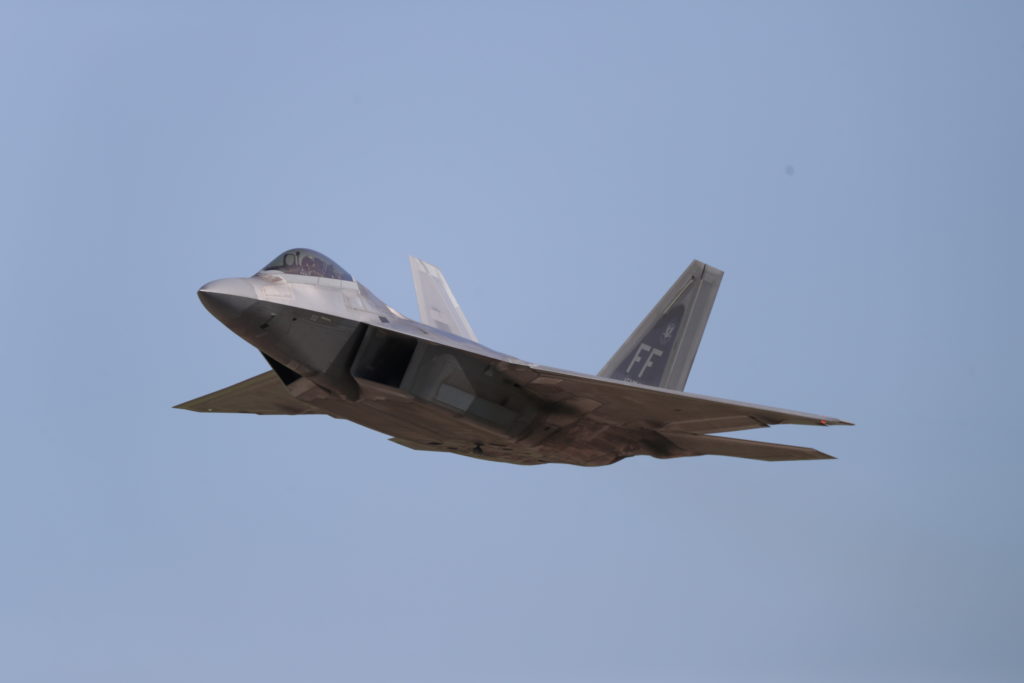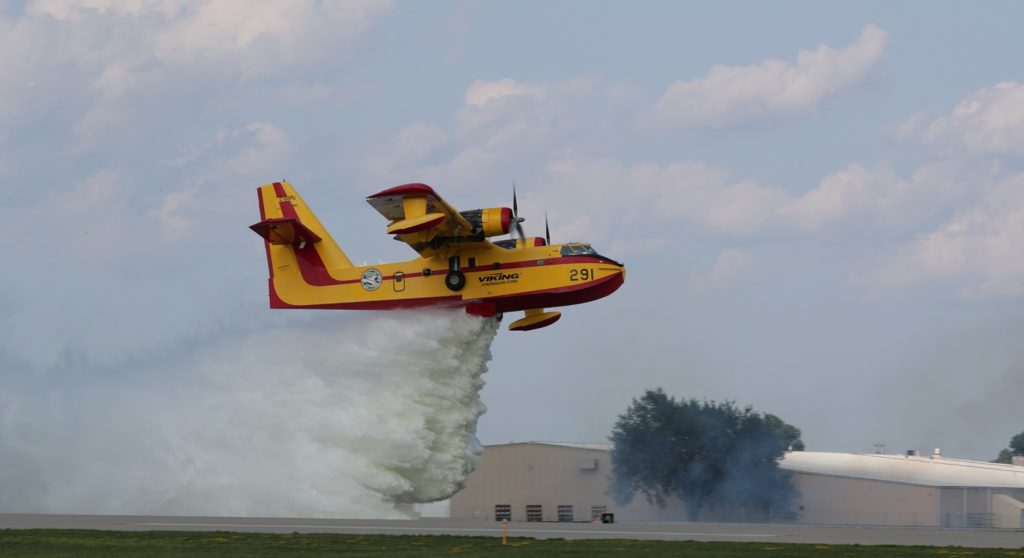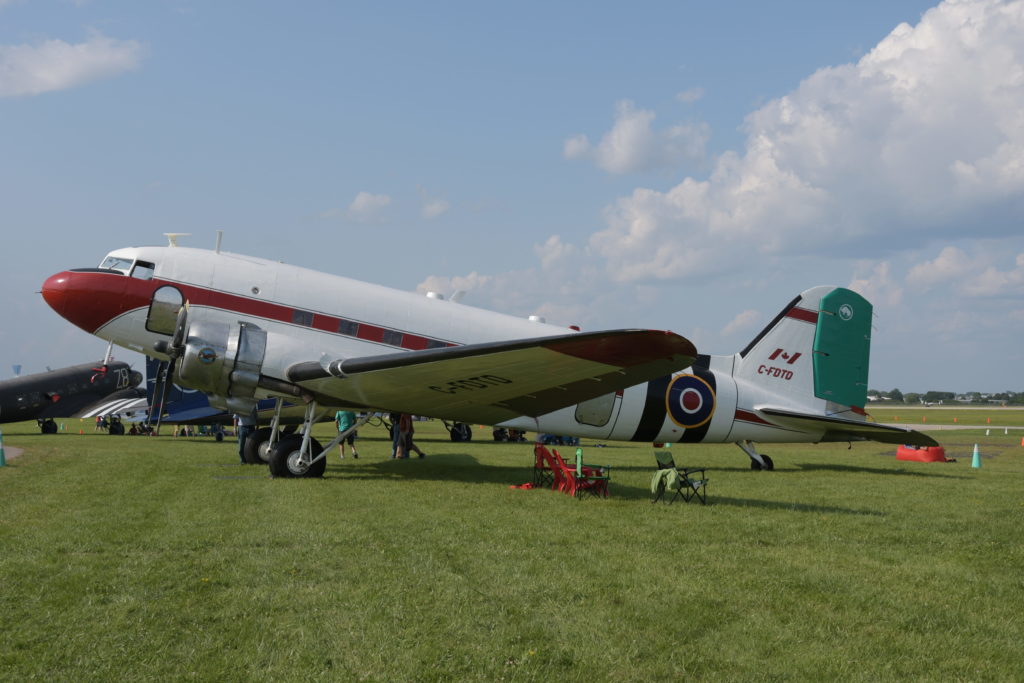Estimated reading time 13 minutes, 16 seconds.
Fifty years ago, “Oshkosh” entered the aviation vocabulary as a special place to celebrate a love of aircraft, flying and aviation in all its forms.

The Experimental Aircraft Association (EAA) was founded in Wisconsin in 1953, and its annual fly-in quickly became a popular destination. In 1970, Oshkosh replaced Rockford as the host airport and offered lots of room to grow.
This year’s EAA AirVenture convention hosted about 642,000 people – 6.8 per cent above 2018’s record total – with Canadians representing the largest international contingent.
In 2019, more than 10,000 aircraft flew into Oshkosh and surrounding airports, including 2,758 show planes. About 40,000 people camped at fly-in and drive-in sites; 75,000 people attended 1,500 educational forums, workshops and presentations; and 863 commercial exhibitors connected with customers.
Beyond the numbers, Oshkosh is a special place where aviation fans are free to mingle, kick tires and be inspired to build a plane, learn to fly or work in the aviation industry.
The EAA has gone to great lengths to create a model aviation utopia where enthusiasts always feel welcome visiting an airport. Similar leadership is also overdue in Canada.
Daily Airshows
Pratt & Whitney Canada got star billing for co-sponsorship of the daily AirVenture airshow even though only a handful of aircraft were P&WC powered – a couple of Aermacchi S-211 jet trainers.
This year, the seven-day show featured a large EAA WomenVenture gathering of female aviators and salutes to the “Year of the Fighter”, D-Day and aerial firefighting.
The U.S. Air Force F-35 Lightning and F-22 Raptor flew daily performances, as did large formations of Second World War, Korean War and Vietnam era warbirds. Other rare treats included a rare North American XP-82 Twin Mustang and the fourth de Havilland DH 98 Mosquito now flying in North American (recently restored in New Zealand).
Viking Aircraft’s Canadair CL-215 was the star attraction in the daily aerial firefighting display, dropping two or three loads of water scooped from nearby Lake Winnebago.
The short flying program also included an Air Tractor AT-802F waterbomber and a USAF Lockheed C-130 equipped with a Modular Airborne Fire Fighting System (MAFFS). Elsewhere, a twin-engine Douglas A-26 air tanker once owned by Conair Aviation was recently repainted in 1970’s era colours to celebrate the B.C. company’s 50th anniversary.
Since Viking made its first corporate appearance at Oshkosh in 2018, it has secured launch customers for its CL-415EAF (Enhanced Aerial Firefighter) turbine conversion and the new-build CL-515 amphibian.
Into the Future
Oshkosh has always been a showcase for leading edge aviation technology. This year the airshow honored the historic accomplishments of aircraft designer Burt Rutan and the emerging electric-powered aircraft industry, which includes both conventional fixed-wing (eCTOL) and vertical takeoff and landing (eVTOL) designs.

Opener, an innovative eVTOL company founded by Marcus Leng in Warkworth, Ont., received a lot of recognition at Oshkosh.
CEO Leng was awarded the EAA’s 2019 August Raspet Award, “in recognition of his outstanding contribution to the advancement of light aircraft design. Leng innovated modern battery and motor technologies to produce BlackFly, the world’s first fixed-wing, all-electric vertical take-off and landing (eVTOL) personal ultralight aircraft.”
To mark the occasion, Opener donated one of its piloted BlackFly V2 prototypes to the EAA Museum.
BlackFly can easily take off and land on small areas and travel distances up to 35 miles (25 miles restricted in the U.S.), at speeds up to 75 mph (62 mph restricted in the U.S.). The winged aircraft is powered by eight electric motors and cruises like a biplane in forward flight.
Aircraft development shifted from Ontario to the Silicon Valley in 2014, but Opener is a Canadian company, and two-thirds of its employees in California are engineers and programmers recruited from Canada
Like most eVTOL aircraft, all the early BlackFly test flights have been conducted using unmanned aircraft. This presented an early development challenge because regulators were slow to approve test sites for drones in Canada and the US.
More than two dozen BlackFly test aircraft have cumulatively flown more than 23,000 miles during more than 2,300 flights. Since introducing BlackFly at EAA’s AirVenture 2018, Opener has logged another 11,000 miles (17702.78 km) and 900 flights on the preproduction V3 model, has upgraded firmware and software, and has streamlined manufacturing.
For the past five years, Opener has operated a year-round BlackFly test site over 6,000 acres of canola fields in rural Saskatchewan. The BlackFly V3 is being flown daily to ensure the aircraft is safe for manned flight.
The company’s new president Ben Diachun revealed that production has commenced on the first 100 single-seat BlackFly V3’s for sale to the public. Diachun says the personal aerial vehicle (PAV) is simple to master and requires no formal licensing or special skills to operate safely in the U.S. (but owners in Canada will require a pilot certificate).
Opener has not revealed a price for the BlackFly, but says that it will cost “about the same price as a SUV.”
Diachun previously led development of a wide variety of innovative experimental aircraft as president of Scaled Composites, which was founded by Burt Rutan and recently developed SpaceShipOne, SpaceShipTwo and the late Paul Allen’s Stratolaunch — the world’s largest composite airplane designed to air launch systems to orbit.
More Diamonds
Diamond Aircraft is ramping up aircraft production at its Canadian, Austrian and Chinese factories to fill orders from flight training schools seeking to reduce the world pilot shortage, says Scott McFadzean, president of the Canadian company.
Wanfeng Aviation Industry bought the Diamond Flight Centre at London, Ont. in 2015, a 60 per cent interest in the Diamond Aircraft of Canada in 2016 (along with production rights to the DA40 and DA62), and then acquired 100 per cent of Diamond Aircraft in Austria in late December 2017.
Last year, the Canadian factory delivered 40 DA40 singles and 15 seven-seat DA62 twins to customers in The Americas, Australia, New Zealand and elsewhere.
This year, McFadzean expects Canadian production to more than double, and in 2020 it will relaunch production in London of the two-seat DA-20C equipped with a new Garmin G500TXI glass cockpit.
In June 2018, the Leadership In Flight Training (LIFT) Academy in Indianapolis owned by Republic Airlines took delivery of the first of 50 Austro Engine powered Diamond Aircraft, including 40 DA40 NG and 10 DA42-VI twins, with the majority of the aircraft to be delivered in 2019.
Other schools ordering aircraft include Embry-Riddle Aeronautical University (ERAU) with campuses in Arizona and Florida buying five new DA42s, and Blue Line Aviation in North Carolina ordering 10 DA40 NGs and one DA42.
McFadzean calls the DA62 a “flying SUV” and says it is the first company designed for owner-pilots and “Part 135 charter operators,” rather than the flight training market. Recent exports include deliveries to dealers in Mexico, Colombia and Brazil.
The latest version of the five-seat DA50 single is powered by a 300 hp Continental CD-300 Jet-A1 engine, which made its first flight on March 22, 2019 in Austria. The DA50 has been around since 2007, but was not launched because of poor market conditions.
Diamond expects the DA50 to receive EASA certification in 2020, with FAA and Transport Canada certification to follow about nine months later. The DA50 is the first Diamond product designed to compete against the popular Cirrus SR22.
McFadzean says the DA50 and DA62 share the same cabin and undercarriage. The CD-300 is an updated version of the six-cylinder, three-liter Thielert Diesel engine. Continental bought Thielert in 2013.
Diamond is also developing the all-carbon fiber tandem, two-seat DART aerobatic trainer powered by a 450 hp Motor Sich AI-450 SR turboprop or a 550 hp General Electric H75-100 turboprop. The civil certified trainer will feature a Garmin G3000 glass cockpit and twin Martin Baker ejection seats.
Diamond is currently hiring 100 more people to support aircraft production in London, Ont., where previous contracts to build two Dornier Seastar airframe and a secret Northrop Grumman manned/unmanned reconnaissance aircraft have both ended.
Murphy Revival
Since its founding in 1985, Murphy Aircraft Manufacturing of Chilliwack, B.C., has delivered more than 2,000 kit aircraft to customers around the world.
The company’s first kit was the Renegade biplane (800 sold), followed by the two-seat Rebel (850 sold) and Super Rebel (350 sold) with the latter aircraft partially designed by famous DHC engineer Richard “Dick” Hiscock before his death.
“In 2003 we were selling a lot of aircraft because US$0.63 would buy a Canadian dollar … but in 2008, it took US$1.07 to buy a Canadian dollar so we scaled back production when demand dropped and started supporting the B.C. helicopter repair and overhaul industry,” recalled founder Darryl Murphy.”
Two years ago, Murphy decided to refresh the popular two-seat Rebel to accommodate a larger engine and carry more payload. The resulting Radical displayed at Oshkosh has a longer wing, bigger seaplane door, single-piece bulkhead and a 1,900 lb (861.82 kg) gross weight.
“Historically, 80 per cent of our kits were sold in the U.S.A., but with this aircraft (the Radical) we’ll wait and see. It could come out 50-50 between Canada and the U.S. with the vast majority equipped with floats — our floats,” said Murphy.
The complete Radical kit (from the firewall back) costs US$35,900, weighs 1,200 lbs (544.31 kg) and is shipped in a 15-foot by 4-foot by 3-foot wooden crate, and will take an average of 1,500 hours to build.
At Oshkosh, Murphy also displayed a Renegade biplane powered by a 124 hp Verner Scarlett 7U radial engine built in the Czech Republic.
Plane Savers DC-3
During the five months Mikey McBryan’s team was restoring their Douglas DC-3, C-FDTD to flying condition at St. Hubert Airport, tens of thousands of people followed the progress online on 156 daily episodes of Plane Savers posted to YouTube.

At Oshkosh, Plane Savers fans tracked down the D-Day veteran and were treated to the announcement that the second season of Plane Savers launches on August 1, when McBryan will reveal his next aircraft restoration project.
Meanwhile, on the opposite side of Oshkosh Airport, Basler Turbo Conversions took delivery of DC-3 C-FDTB, which it arrived by road from Red Deer, Alta., during AirVenture. The former Buffalo Airways DC-3 joined four other ex-Canadian DC-3s awaiting conversion to PT6 power at Basler, including one from North Cariboo in B.C. one from First Nations Transportation in Manitoba, and two from Aviation Boreal in Quebec.
Apollo 11
AirVenture 2019 also coincided with the 50th anniversary of the historic Apollo 11 moon landing. This provided Canadian space historian and author Robert Godwin with a unique opportunity at Oshkosh to unveil never before seen motion picture footage of Neil Armstrong and Buzz Aldrin walking on the Moon.








